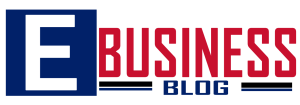Moving your business to a new location is a major milestone for a United Kingdom business owner like yourself, but it can be one of the most disruptive events for your team as well.
Between packing belongings in your current space, logistics, and adjusting to a new business environment, productivity can easily plummet if the office relocations process isn’t managed carefully.
The key to success? Proactive planning, clear communication, and strategies that keep your employees engaged and efficient, even amid the chaos.
The following sections will guide you through actionable steps to maintain (and even boost) staff productivity before, during, and after your business move. Read on to learn more.
Why Productivity Suffers During a Business Move (And How to Prevent it)?

Before exploring office transition solutions in the United Kingdom, it’s important to understand the common challenges that hurt productivity during a business location move:
- Physical Disruptions: Packing, unpacking, and workspace disorganization can interrupt workflows.
- Mental Distractions: Employees may feel stressed about the transition, new commutes, or changes in routine.
- Operational Delays: IT setups, phone systems, and supply chains might experience hiccups.
- Communication Gaps: Without clear updates, employees waste time guessing what’s happening next.
The good news? Each of these challenges has a fix.
Phase 1: Pre-Move Planning (Set the Foundation for Success)
The first step in a business move is the pre-move planning. This involves the following:
Create a Detailed Moving Timeline
A well-structured timeline keeps everyone aligned. Break the move into stages. First, finalize the new lease, work with commercial relocation in Greenford, and inventory equipment eight weeks and more before the moving date.
Next, order packing supplies, label departments, and notify clients/vendors. Then, host team briefings, confirm movers, and start non-essential packing two weeks before the move.
Finally, pack daily-use items last, back up data, and finalize seating charts a week before.
Delegate Move-Related Tasks Effectively
Avoid overloading one person by distributing responsibilities. Assign specific persons to be move coordinators (in charge of overseeing logistics, vendor communication, and scheduling), department leads (charged with ensuring their teams pack efficiently without losing critical documents), and information technology (IT) Specialists to handle tech transfers, internet setup, and equipment testing.
Communicate Transparently and Frequently
Uncertainty breeds inefficiency. Keep staff informed through weekly email updates (outline progress, next steps, and deadlines), Q&A Sessions (address concerns before rumors spread), and visual aids (floor plans and move-day maps help employees visualize the transition).
Phase 2: During the Move (Keep Work Flowing Smoothly)
The next vital step is during the business move itself. This includes:
Minimize Downtime with Flexible Work Options
Lower the chances of team downtime with the following flexible work options for your personnel: remote work days to let employees work from home during peak moving days, staggered shifts to reduce onsite crowding, and an Essential-Only Policy to postpone all non-critical tasks until after the move.
Maintain Morale with Quick Wins
Keep everyone in high spirits during the move by employing the following: daily huddles to celebrate progress and address hurdles, small incentives, and stress relievers.
Ensure Critical Operations Continue Uninterrupted
Never allow your business’s core operations to get bogged down by a business move.
Remember to do the following: designate a ‘War Room’ – a temporary, fully functional space for must-run operations, have back-up systems like portable Wi-Fi hotspots, spare laptops, and cloud-based files to prevent tech delays, and assign someone to manage customer inquiries to avoid service lapses.
Phase 3: Post-Move (Accelerate Adjustment and Productivity)

Congratulations on your business move! Nonetheless, the work doesn’t stop there. You’ll have to optimize the new workspace, reintroduce routines gradually, and track and improve productivity metrics.
To optimize your new workspace for efficiency, you need to have ergonomic setups (like adjustable chairs, monitor stands, and so on), sound noise management (like partitions, quiet zones, and more), and test tech immediately.
Next, reintroduce routines gradually in the new workplace. You can do this by doing a First-Day Walkthrough (tour the new space as a team – all the while highlighting key areas), Training Refreshers (revisit new tools or processes to ensure everyone is confident), and Feedback Loop by surveying employees after Week 1 to identify unresolved pain points.
Lastly, compare pre- and post-move performance in: task completion rates, employee sentiment, and customer feedback.
Long-Term Strategies to Sustain Productivity After the Move
Maintaining productivity in your new workplace after a business move is an ongoing process. You can keep productivity levels high by reinforcing a company-wide positive culture and keep on iterating and improving.
Reinforce positive culture through the following: celebrate the move (host a small party or team lunch to mark the milestone), recognize contributors (publicly thank employees who went above and beyond), and share success stories (highlight how the new space improves workflows).
Remember to iterate and improve. Do that by doing monthly check-ins (reassess workspace layouts), ongoing training (introduce new efficiency tools), and wellness initiatives to combat post-move fatigue.
Final Thoughts: Turn Disruption into Opportunity
A business move doesn’t have to mean lost productivity. With structured planning, empathetic leadership, and a focus on seamless transitions, you can keep your team engaged and efficient every step of the way.
Use this guide as your roadmap and remember, the effort you invest now will pay off in a smoother, more productive future.





































